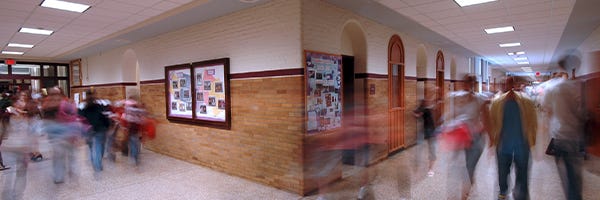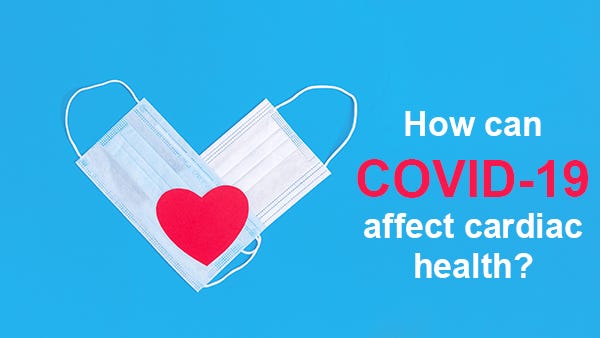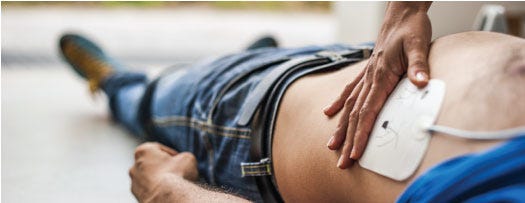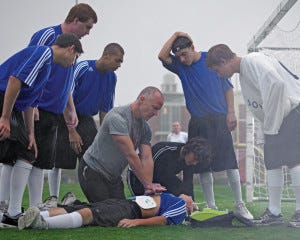While states, counties, and individual school districts continue to release guidelines for re-entry, the transition from remote to in-person learning can have its difficulties. While PPE, infection prevention, and thermometry may be at the top of your mind, there are several pieces of equipment and areas of your buildings that may be overlooked.
With buildings empty for months, some of your school’s infection prevention and emergency supplies may need to be checked and updated. It is imperative for schools and facilities to have the proper equipment in case of an emergency, especially amid a pandemic. Below we have a brief outline of areas of your building that may require updates to equipment, additional cleaning protocols, or a change in normal operation.
The CDC’s K-12 Schools COVID-19 Mitigation Toolkit can be a great tool to implement mitigation strategies to reduce the spread of COVID-19. This toolkit includes strategies, checklists, resources, and more.
General Equipment Check
AEDs -
Research has shown that there might be a correlation between COVID-19 and the heart. In some studies, patients who had the virus also experienced heart inflammation. One study, which focused on student athletes at The Ohio State University, showed that many of the athletes who were diagnosed with COVID-19 had symptoms of myocarditis, too. As new information emerges about how the virus impacts overall health, it is important to be prepared in case of a cardiac emergency. Performing a comprehensive AED readiness check can help ensure your facility is ready.
- Verify that the AED batteries are working.
- Check the service indicator light.
- Check for any wear and tear on the AED.
- Ensure that AED pads and accessories are not expired.
- Consider adding additional AEDs in high traffic areas such as hallways, main building entrances, gymnasiums, cafeterias, auditoriums, and nurse’s office.
Air Filtrations and Filters -
Air purification and filtration in schools has been a highly discussed topic, but there are still many questions as to its effectiveness against COVID-19. However, airborne infection is 15-20 times more likely to occur indoors than outdoors. For schools, experts also suggest that stronger filters for existing ventilation systems are a higher priority than providing individual purifiers for each classroom.
- Review any known issues and check for water leaks or mold growth.
- Look for any covered diffusers, closed supply diffusers, blocked return grilles, etc.
- Make sure fans and portable devices are not blowing from one person on to another.
- Operate all HVAC systems in occupied mode at least one week before reopening if the systems have been shut down for an extended period of time.
For more information on ventilation in Schools and Childcare settings, visit the CDC’s website for building recommendations.
To see a comprehensive guide for how to prepare your ventilation systems, visit the American Society of Heating, Refrigerating and Air Conditioning Engineers to see their full guidance on reopening schools and universities.
Oxygen Availability -
Twenty-five percent of 911 emergencies in schools are due to breathing issues. Breathing emergencies can be caused by anxiety attacks, asthma attacks, cardiac arrest, food allergies, and more. With COVID-19, some severe cases of the virus led to patients having problems breathing as well. Therefore, schools should have emergency oxygen devices available in the case of a breathing emergency.
- Check shelf life of the oxygen if there is a date.
- Check condition of disposable oxygen masks, tubing, and other accessories.
Disposable Products, Disinfectants & PPE -
Another major consideration before reopening is the ability to provide PPE for students and staff. According to one estimate from ASBO International, it may cost some districts up to $148,190 to provide disposable masks for students who do not bring them from home and another $44,415 for staff. The organization also estimates spending about $1,440 on gloves for custodians. Besides protective apparel, it is also important that schools have effective hand sanitizers, disinfectant sprayers, and cleaners. For a more detailed checklist, see the CDC’s Considerations for K-12 Schools.
- Replace expired hand sanitizer and make sure that it has at least 60% alcohol.
- Consider investing in electrostatic disinfectant sprayers and effective cleaners.
- Have a supply of gloves and masks for students and staff.
- Store all cleaning equipment away from children.
Autoinjectors & Inhalers for Allergies -
According to the National Association of School Nurses, students may be eating in places other than the cafeteria due to social distancing rules. To avoid anaphylaxis, NASN recommends that students with known allergies always carry their autoinjectors with them, and that those with asthma continue taking their medications.
- Ensure that there is a supply of unexpired epinephrine available, extra syringes, disposable spacers and rescue inhalers.
Water Systems -
After time away and reduced operation of normal water usage, it is important to take the proper health and safety measures to ensure your drinking water is free from lead or copper exposure or any other diseases associated with water.
Areas in Need of Special Attention
Entrance -
A building’s entrance can be one of the most highly trafficked areas. Having a designated station for symptom and temperature checking at your entrance can help reduce the chances of an outbreak and limit building capacity while allowing for easy documentation.
Tips for building entrances:
- Post signs and messages in highly visible locations that promote everyday protective measures like mask use and hand washing.
- Have a designated healthcare professional help with contact tracing, taking temperatures, and symptom checking.
- Consider thermal imaging / infrared cameras for a more reliable and faster temperature reading.
- Limit nonessential visitors, volunteers, and activities that involve external groups or organizations coming into the building.
- Using Electronic Health Record Systems can help organize health records, monitor outbreaks, and keep track of Individual Healthcare Plans (IHPs), Medicaid documentation, vaccinations, and more.
Transportation -
School Busses operating at a smaller capacity should still take proper precautions when it comes to social distancing and proper cleaning.
Tips for school transportation:
- Check students’ temperatures at the front door before a student gets on the bus.
- Students should keep their face protection on the whole time they are in the vehicle.
- Consider keeping a box of disposable face coverings in the front of the bus for any student who may forget theirs.
- Students should stagger seating from row to row and drivers can help organize seating by marking off every other seat.
- If possible and weather permitting, allow bus windows and/or roof hatch to remain open while transporting students to increase air flow.
Classroom and Instructional Areas -
As an area where students spend most of their day, the classroom can be a breeding ground for germs and poor air circulation. Aside from a more intense surface cleaning regimen, making sure the classrooms’ ventilation systems are updated and running properly with new filtration can lower the chance of airborne infection.
Tips for classroom cleaning, social distancing, and ventilation:
- Use a non-toxic cleaner to disinfect frequently touched surfaces including desks and doorknobs.
- Limit the use of shared items and encourage hand washing and/or sanitizing before and after use.
- Keep students’ belongings separated from others’ and in individually labeled containers, cubbies, desks, or other areas.
- Space seating and desks at least six feet apart, facing one direction instead of facing each other, and use partitions when necessary.
- Bring in as much outdoor air as possible by opening windows and doors to the outside and/or hallways.
- Consider running your HVAC system at maximum outside airflow for 2 hours before and after the building is occupied.
- Use portable air cleaners that use high-efficiency particulate air (HEPA) filters to enhance air cleaning in higher-risk areas.
Nurse’s Office and Isolation Room -
While developing COVID-19 symptoms is a serious call for concern, there are still a number of other reasons students make the trip to the school nurse, whether it be routine daily medication, diabetic check-ins, or other illnesses. Isolating students in a separate room/area who show symptoms of COVID-19 can help reduce traffic and maintain social distancing in the nurse’s office.
- School Nurses and other healthcare professionals should follow the proper infection prevention and control recommendations from the CDC and wear the proper protective apparel.
- Consider setting up an isolation room for students who experience COVID-19 symptoms.
- Parents or guardians should be contacted to transport sick students home as soon as possible.
- Areas used by an individual who developed symptoms should be cleaned and disinfected immediately.
- Students, teachers, and staff who have been in close contact (within 6 feet for a cumulative total of 15 minutes or more over a period of 24 hours) of someone with COVID-19 should not return to the building until they have completed their quarantine.
- COVID-19 tests can be administered in the facility without having to wait to schedule one outside of school.
- Parents, staff, and local health officials should be notified immediately of any cases of COVID-19 in the building.
- Stock both the nurse’s office and isolation room with disinfectant, hand washing area, furniture, and other PPE and infection prevention supplies.
- Portable carts can be a great way to provide care to students and keep them out of the confined space of the nurse's office. Carry everything you need to do classroom visits, temperature checks, screenings, and more.
Hallways -
In normal circumstances, school hallways can be high-traffic areas, especially between class periods, lunchtime, and before and after school. Making changes to the normal traffic pattern in hallways can be essential in reducing the spread of airborne particles.
- Place hand sanitizing stations/dispensers at classroom entrances, restrooms, and in high traffic areas.
- Reduce the number of students and staff in the halls at once by adjusting class passing periods and limiting time spent at lockers/cubbies.
- Establish one-way traffic routes using floor tape, floor signs, or other physical distance markers to help maintain safe distancing.
Restrooms -
Restrooms are one of the most widely shared common spaces and can be an area where germs can spread quickly. Encouraging all students and staff to thoroughly wash their hands can be one way to prevent the spread of germs.
- Facility restrooms should be cleaned multiple times throughout the day, and including heavily touched areas such as doorknobs, faucet handles, and toilet levers.
- Social distancing can be maintained by blocking off stalls and sinks that do not have partitions or some sort of separation.
Physical Education and Facilities -
For children and adolescents, physical exercise is shown to elevate self-esteem, improve concentration, reduce depressive symptoms, improve sleep, and more. It can also have great benefits to overall health and wellness which is extremely important to help promote healthy lifestyles and boost the body’s ability to fight off illness and infection.
- Physical Education settings should adhere to the school, district, and state guidelines to promote the health and safety of students.
- Choose activities that require little-to-no physical contact between students.
- Conduct physical activity outside if weather permits.
- Reduce equipment sharing and consider using personal PE kits for each student.
- Use floor markers and spots to promote traffic flows and physical distancing between students.
- Keep doors and windows open whenever possible to maximize circulation and airflow due to increased respiration by students during physical activity.
View Shape America’s School Reentry Considerations for more information to help administrators, staff, and teachers prepare an environment for safe and supportive instruction.
Athletic Trainers: Room, Facilities, and Return-to-Sport -
Athletic Trainers play an important role in bridging health and safety recommendations into practice. While many pre-pandemic precautions have remained the same, Athletic Trainers have begun working in collaboration with school officials and other medical professionals to provide a safer and healthier environment for student athletes. Returning to sport and other activities requires more than just updated cleaning protocols, but also closer attention to athlete’s physical health, pre-participation examinations, and return to activity following COVID-19.
- Working with the school and districts other medical professionals to assemble a COVID-19 response team to implement a safe return-to-sport plan.
- Establish an effective communication plan with the athletic director and coaches to identify areas that require adjustments to adhere to local and state guidelines.
- Eliminate equipment sharing between athletes as much as possible and consider investing in electrostatic disinfectant sprayers and effective cleaners to sanitize equipment and shared spaces after use.
- Review and make necessary updates to cleaning and sanitization policies and promote proper hygiene to help reduce the spread of germs.
- Collect updated medical history for all returning athletes and review the Statement on PPE and Athletic Participation for more information on extending pre-participation physical examinations to reduce strain on physicians and clinics.
- Consider setting up general physical examinations at school that include a check of vital signs, COVID-19 symptom and exposure checking, and other cardiovascular, muscular, or general medical examinations.
- Identify and prepare for detraining, heat acclimation, conditioning, and condensed or expanded season concerns.
- Ensure venue-specific EAPs are in place and up to date due to COVID-19 related effects on the cardiovascular, neurologic and other systems.
For more specific details relating to Return to Sport considerations, view NATA’s Considerations for Secondary School Athletic Trainers or your local association’s guidelines and policies.
These are just a few ways schools can be better prepared before students return. For in-depth guides to reopening schools, please visit the CDC, WHO, and other health organizations to find more information to keep your students, staff, and communities safe and healthy.
Visit schoolhealth.com to shop all emergency preparedness equipment, infection prevention supplies, PPE, and more.
Important Links and Additional Resources
https://www.edweek.org/leadership/air-purifiers-fans-and-filters-a-covid-19-explainer-for-schools/2020/10
https://www.cdc.gov/coronavirus/2019-ncov/downloads/community/School-Admin-K12-readiness-and-planning-tool.pdf
https://www.schoolhealth.com/blog/impact-of-covid-19-on-cardiac-health-in-young-people/
https://www.ashrae.org/technical-resources/reopening-of-schools-and-universities#background
https://higherlogicdownload.s3.amazonaws.com/NASN/3870c72d-fff9-4ed7-833f-215de278d256/UploadedImages/PDFs/COVID-19_Considerations_for_School_Nurses_Food_Allergy_and_Anaphylaxis_in_School_during.pdf
https://www.nata.org/press-release/020514/nata-issues-new-recommendations-preparticipation-physicals-and-disqualifying
https://www.cdc.gov/healthyschools/physicalactivity/pdf/Classroom_PA_COVID_Considerations_FINAL_201008.pdf
https://www.shapeamerica.org/advocacy/Reentry/K-12_School_Re-entry_Considerations.aspx
https://www.cdc.gov/coronavirus/2019-ncov/global-covid-19/schools.html
https://www.cdc.gov/coronavirus/2019-ncov/community/schools-childcare/ventilation.html
https://www.cdc.gov/coronavirus/2019-ncov/community/schools-childcare/schools.html









